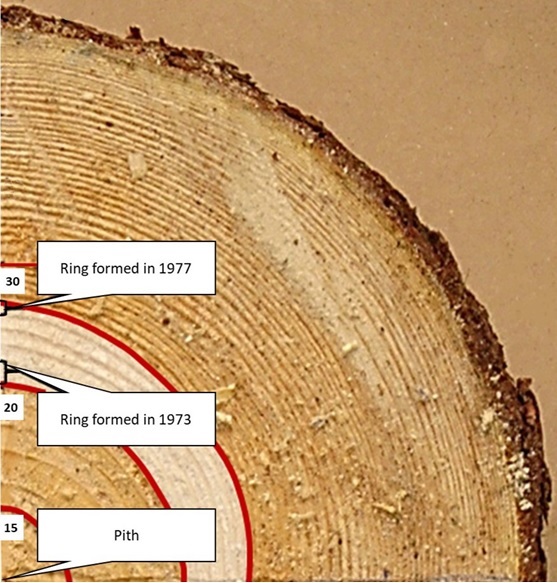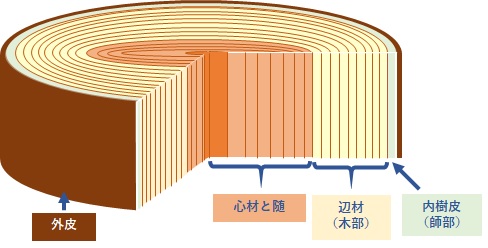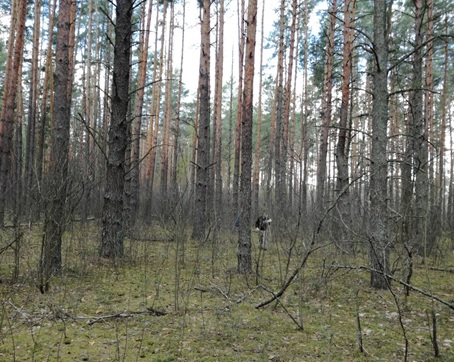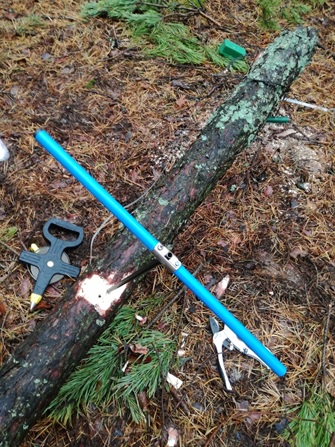Distributions of ¹³⁷Cs and ⁹⁰Sr activity concentrations in trunk of Scots pine (Pinus sylvestris L.) in the Chernobyl zone
Professor Vasyl Yoschenko
Research Overview
The researchers at the Institute of Environmental Radioactivity (IER) at Fukushima University and their colleagues at Ukrainian Institute of Agricultural Radiology (UIAR) have been conducting the joint studies of the distributions and long-term dynamics of radionuclides in the forest ecosystems in Fukushima and Chernobyl within the framework of Japan-Ukraine project SATREPS (funded by JST and JICA).
In the recent study, IER Professor Vasyl Yoschenko and his UIAR colleagues have revealed spatial distributions of Chernobyl-derived 137Cs and 90Sr inside the tree trunk of Scots pine, the principal forestry species in Ukraine (Fig.1,2). The previous studies in this field focused on the radial distributions of radionuclides within the tree trunks at the fixed height of 1.3 m and thus could not provide the comprehensive view on how radionuclides move within the trunk and what are the mechanisms of their translocations. Moreover, the data on the 90Sr distributions were quite sparse.
The study has revealed opposite patterns of the spatial distributions of the two radionuclides. Similarly to K that is required to support production of the new biomass, 137Cs comes to the youngest annual rings[*1] of wood from soil due to its root uptake, and is also translocated into these rings from older sapwood[*2]. 137Cs migrates in wood in the radial direction and can penetrate the annual rings formed before the accident. However, at the time of formation of the new rings of heartwood[*3], some amounts of K and 137Cs are returned back to sapwood. Similarly to Ca that is involved in the process of the wood tissue aging, 90Sr in the tree trunk is translocated and accumulates in the senescing tissues. The concentrations increase in the radial direction from the trunk periphery to the pith. In the vertical cross-section, the highest concentrations are found in heartwood of the bottom part of the trunk.
The Significance of the Study
Besides the scientific interest, obtained results may have a practical value. Imagine that radionuclide is heterogeneously distributed within the tree trunks and we can take one core sample per tree to estimate the average radionuclide concentration in the whole trunk for assessment of compliance of wood to the national standards. Then knowledge about the typical spatial distributions of radionuclides within the trunk will help to develop the adequate sampling method.
Key Terms
[*1]annual rings are the concentric annual increments of the tree trunk. Every year, the new annual ring is formed at the periphery of the trunk. In most of tree species annual rings are easy to recognize on the trunk cross-sections. (Fig.a)
[*2]sapwood is a living wood tissue that conducts water and nutrients (and Cs, Sr).
[*3]heartwood is a dead wood tissue formed from sapwood. Heartwood does not conduct water and nutrients (and Cs, Sr), but it accumulates some of radionuclides by diffusion and other mechanisms. (Fig.b)

Bold lines represent the rings formed in the ages of tree of 15, 20 and 25 years.

Figures


Publication
This study was posted online in Journal of Environmental Radioactivity on June 16, 2020, and will be published in Volume 222, October 2020.
| Journal | Journal of Environmental Radioactivity |
|---|---|
| Title | Distributions of 137Cs and 90Sr activity concentrations in trunk of Scots pine (Pinus sylvestris L.) in the Chernobyl zone |
| URL | https://doi.org/10.1016/j.jenvrad.2020.106319 |
| Authors | Dmytrii Holiaka1, Vasyl Yoschenko2, Sviatoslav Levchuk1, Valery Kashparov1 *1Ukrainian Institute of Agricultural Radiology of the National University of Life and Environmental Sciences of Ukraine *2Institute of Environmental Radioactivity at Fukushima University |
